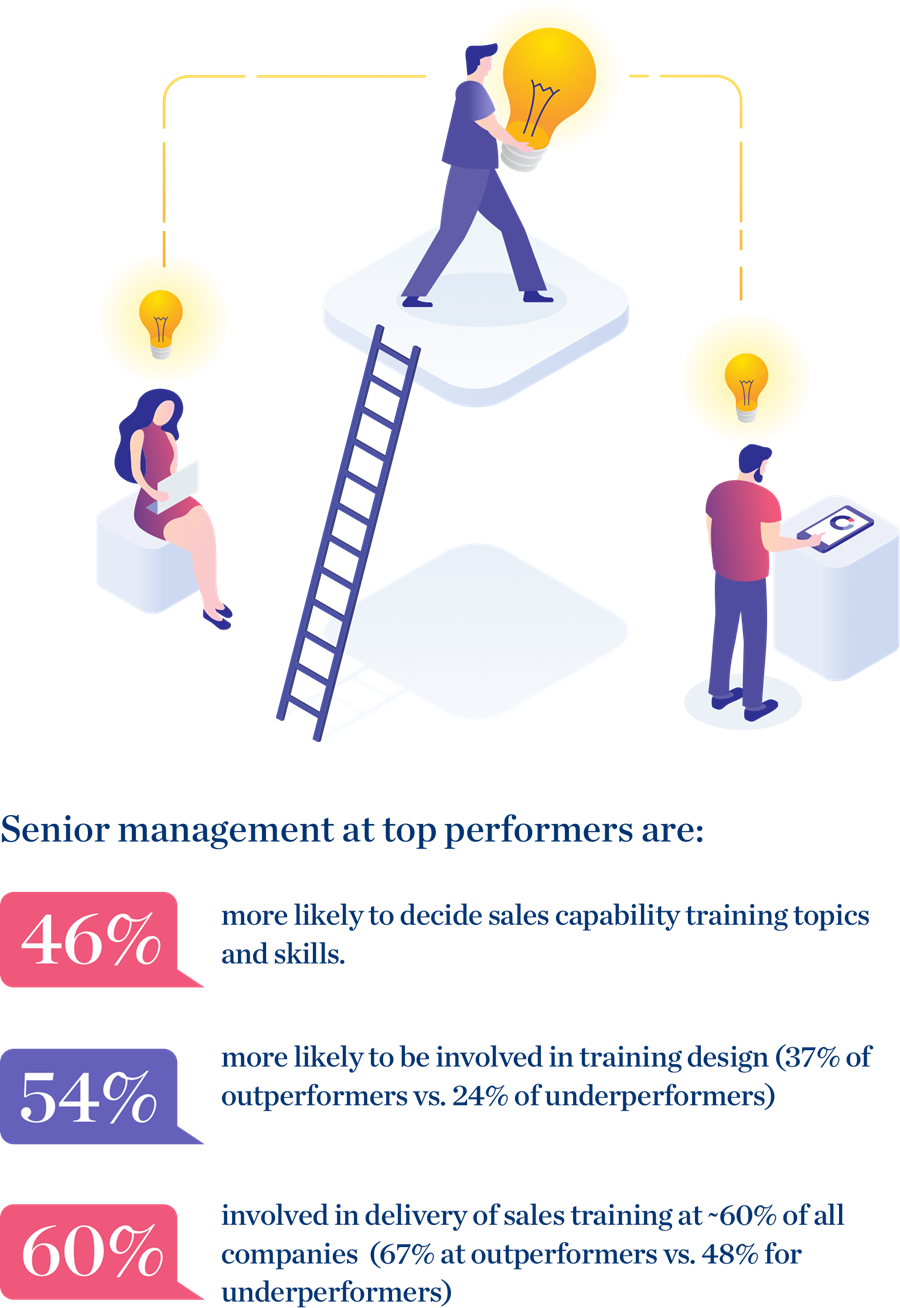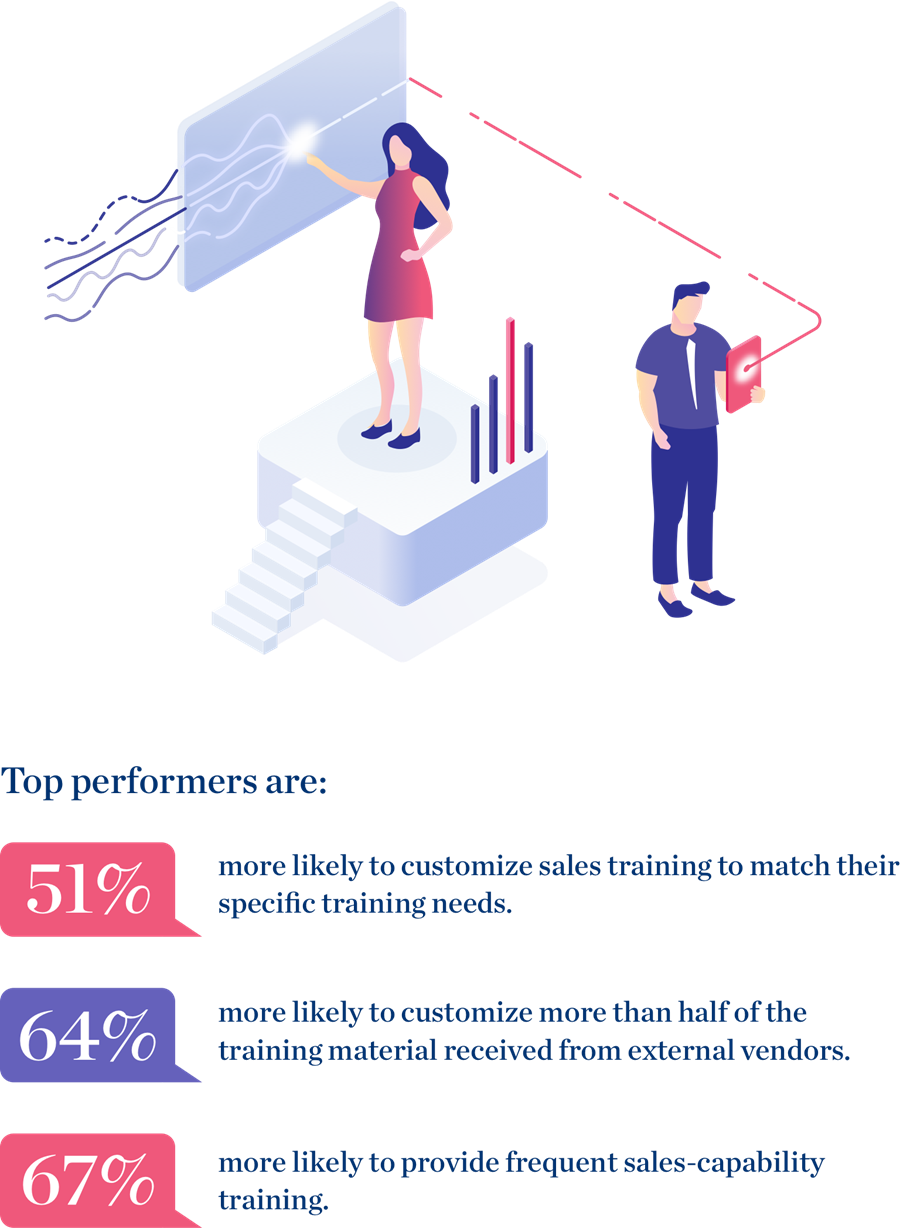Here is an excerpt from an article written by Matt Deimund, Michael Drory, Daniel Law, and Maria Valdivieso for the McKinsey Quarterly, published by McKinsey & Company. To read the complete article, check out others, learn more about the firm, and sign up for email alerts, please click here.
* * *
1. Sales executives own capability building for the long haul

Senior executives in outperforming organizations embrace capability building—often making it their top priority. In less progressive organizations, training program design and accountability for participation is owned by the learning-and-development function without business partner input or, worse, outsourced to a third-party sales training company.
Our research also indicates that it is all but impossible for any capability building to achieve the desired commercial and behavioral results unless the captains steering the ship are also equipping the crew with the right tools. And that requires understanding the root causes affecting sales performance.
The head of sales at a global enterprise IT-services provider wanted to design, build, and execute a brand-new approach to capability building. Prior experience showed that spending on training had a limited return on investment and delivered little tangible behavioral change. Before building one piece of training material, therefore, he and his team designed a capability-building program that targeted the root causes that were limiting the sales force’s ability to deliver against the company’s strategic growth priorities. The company ended up with a certification-based program for managers and sellers that helped the sales force better understand customer needs and position the broader portfolio.
Another issue is that training programs go through a cycle where participation spikes for the first couple of months after launch when excitement is high. Then participation falls away. The sales-leadership team at the enterprise IT-services company understood this and remained visible at the forefront of the program for the long haul. They celebrated program wins at town halls, rewarded commercial success, and rolled up their sleeves in monthly progress reviews to assess the program’s effectiveness.
The program has been running for more than three years and, thanks to the commitment of sales leaders, it has delivered more than $150 million in incremental business.
2. Tailor program design and content to the sales rep

Top-performing organizations boost the return on their training by ensuring that it is personalized to the audience and unique to their organization and selling process. They do this in two specific ways.
First, top performers make the effort to identify the skills required to deliver their company’s business and sales strategies. They then identify what capabilities they already have and which ones they need to develop to deliver their objectives.
Second, our survey discovered that outperformers do not generally use off-the-shelf sales training materials. Instead, they customize training materials to match the specific needs and priorities across different roles and functions. They understand, for example, that the needs of sales specialists are very different from those of sales-support staff, which are in turn different from those of inside sales telemarketers. Best-in-class players design programs and material that are aligned to the specifics of how sales reps sell to customers.
A global leader in enterprise technology was transforming its commercial go-to-market model. Sales leaders knew they needed to upskill their people, so the company invested heavily in training programs. They identified what type of training the distinct groups within the sales function needed at a granular level across regions based on the skills they required in the new model. Then they created “learning journeys” for each different role, from diverse types of frontline sellers, to account managers, to support staff, to senior sales leaders. For example, specialized frontline sellers needed to focus on collaborating more effectively with each other and with sales support. Therefore, their tailored learning journey focused on improving this critical skill of collaboration, with various elements of e-learning, in-person workshops, fieldwork, and more.
* * *
Here is a direct link to the complete article.
Matt Deimund and Michael Drory are associate partners in McKinsey’s Dallas office, Daniel Law is a consultant in the Houston office, and Maria Valdivieso is director of knowledge for McKinsey’s Marketing & Sales Practice and is based in the Miami office.
